Tesla Autopilot and Full Self-Driving vs. GM Super Cruise vs. Ford BlueCruise
Tesla took an early lead in the race to automate driving tasks, but GM and Ford have beaten the start-up to delivering hands-free driving.
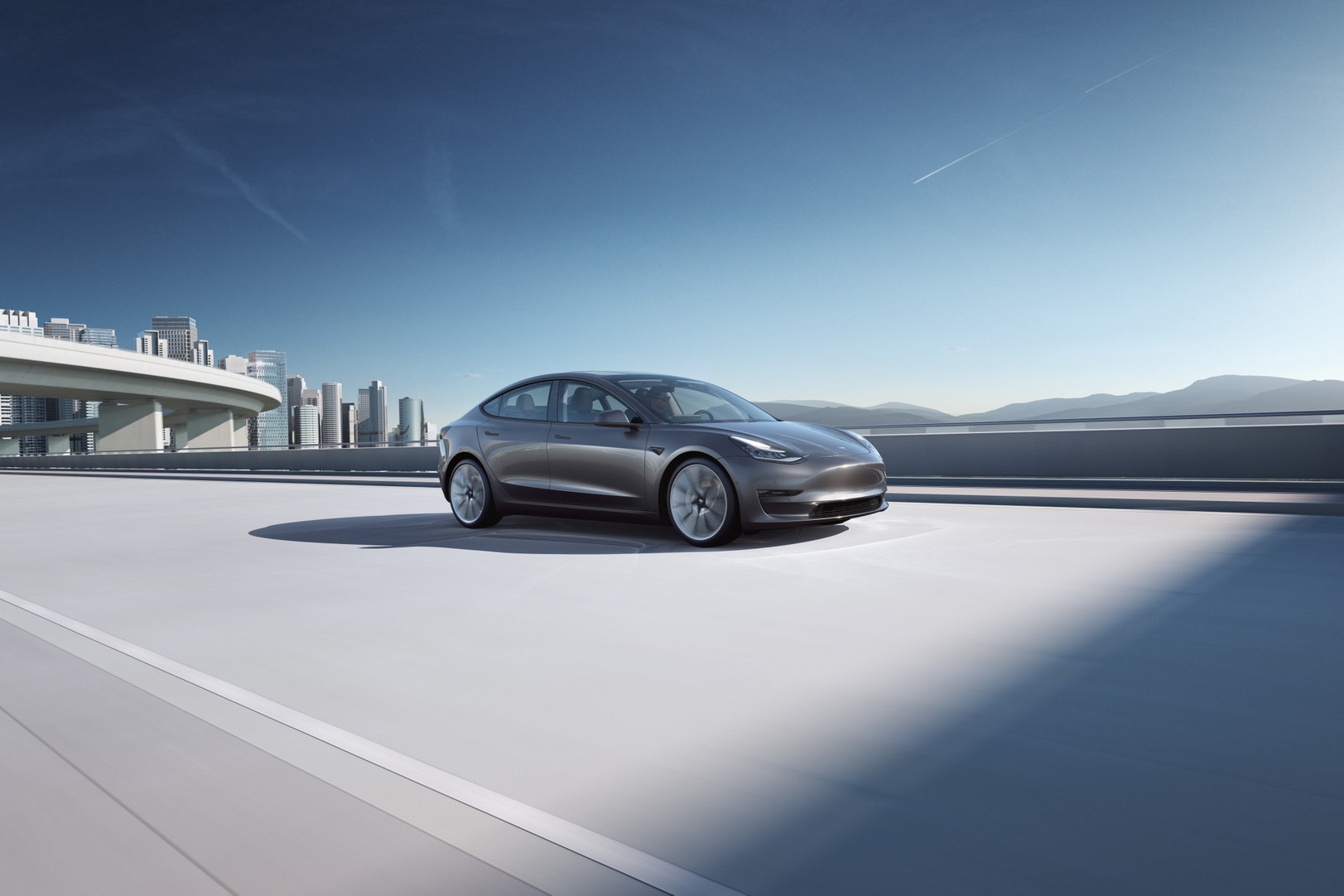 Tesla
Tesla
Article QuickTakes
The past decade has seen a sharp rise in the availability and capability of advanced driver-assistance systems. Many mainstream vehicles now have blind-spot monitoring, which informs you when traffic is lurking next to your rear-quarter panel, and automated emergency braking, which slows the vehicle to mitigate or prevent an imminent rear-end collision. Cruise control has evolved into adaptive cruise control, which uses radar, cameras, and/or laser to track and match the speed of the vehicle ahead of you.
On the cutting edge of driver-assistance technology, a few automakers have even released technologies that make it possible for you to remove your hands from the steering wheel in certain circumstances. General Motors is one of them, with its highway-limited Super Cruise system, and Ford is another, with its similarly capable BlueCruise. And then there’s Tesla. Its Autopilot and Full Self-Driving Capability tech doesn’t allow for hands-free motoring, but it can control the vehicle and negotiate traffic with a driver loosely holding the steering wheel.
If you’re interested in a vehicle with this kind of advanced driver-assistance technology, this primer will help you understand how GM’s, Ford’s, and Tesla’s systems compare.
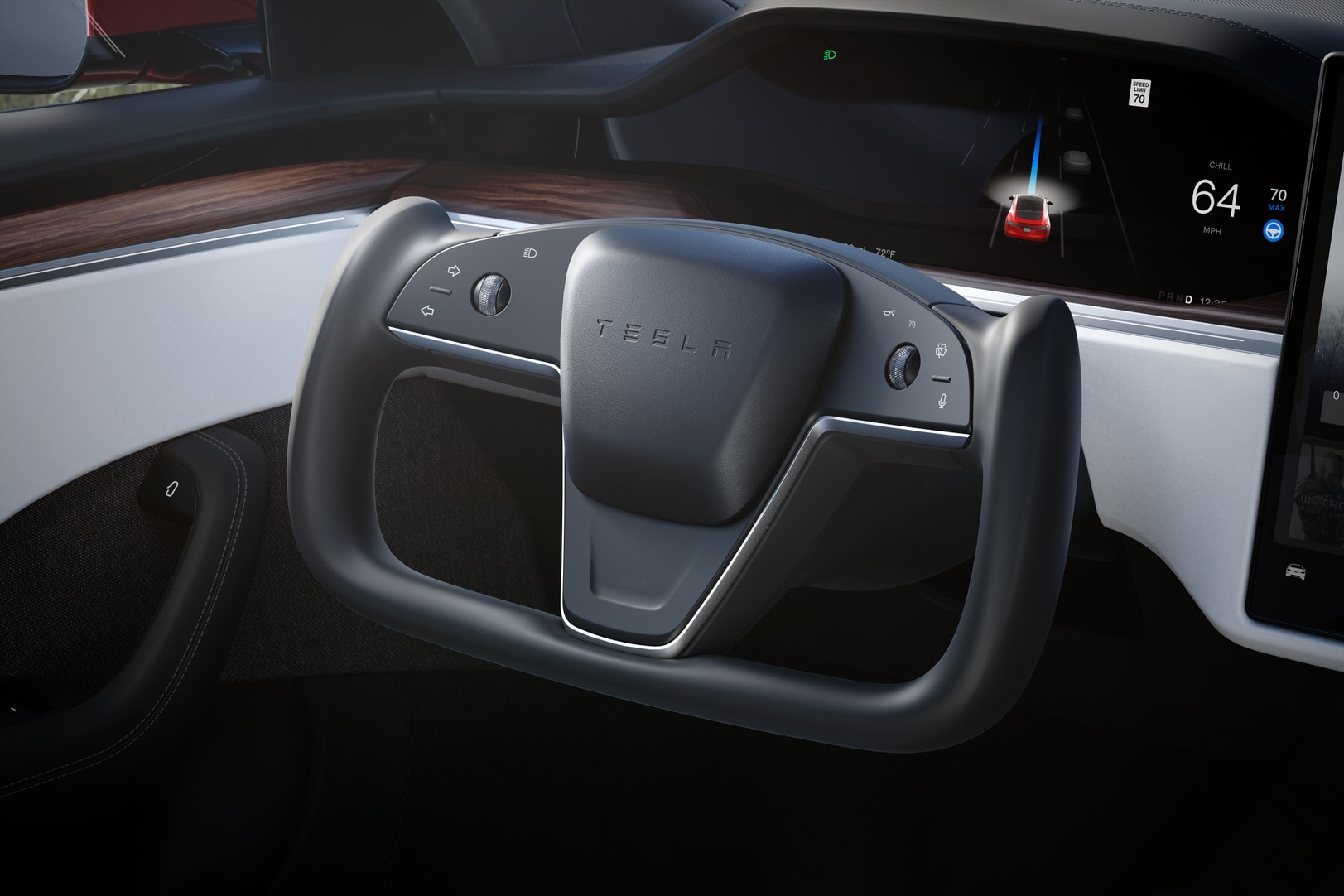 Tesla
Tesla
Tesla Autopilot
Released in 2015, Tesla’s Autopilot captivated consumers, investors, and the auto industry with its ability to accelerate, brake, and steer the vehicle. It gave the impression that the car was capable of driving itself, even if it was designed to be used by an attentive driver with hands on the wheel and ready to take control at any moment.
As other automakers have upgraded from lane-departure warning to lane-keeping assistance systems to lane-centering systems, the Tesla technology that once seemed so futuristic is now common. Currently, the Autopilot tech suite consists of adaptive cruise control and Autosteer, Tesla’s lane-centering system. Competitors’ products, such as Honda Sensing Suite and Kia Highway Driving Assist, have the same capabilities as Autopilot.
Autopilot is standard on every new Tesla on sale today: the Model 3, Model S, Model Y, and Model X. Depending on the model and age of the vehicle, Autopilot uses radar, ultrasonic sensors, and/or cameras to track lane markings and vehicles around them. And while this wasn’t always the case, Tesla now monitors driver engagement, using a torque sensor to detect that the driver has a hand on the steering wheel and, in certain new models, a camera above the rearview mirror to ensure drivers are alert. If a driver removes their hands from the wheel and their eyes from the road, the system will audibly warn them to act. If they continue to disobey the car’s orders, Autopilot will shut down and the vehicle will slow to a stop.
Tesla, believing it can achieve autonomy using just cameras and ultrasonic sensors, no longer equips the Model 3 and Model Y with radar. (The Model S and Model X will likely lose radar, too, at some point.) The reliance on cameras makes Autopilot and FSD more susceptible to perception issues in rain, snow, and fog. Faded lane markings and abrupt road changes in construction zones can also trip up the system.
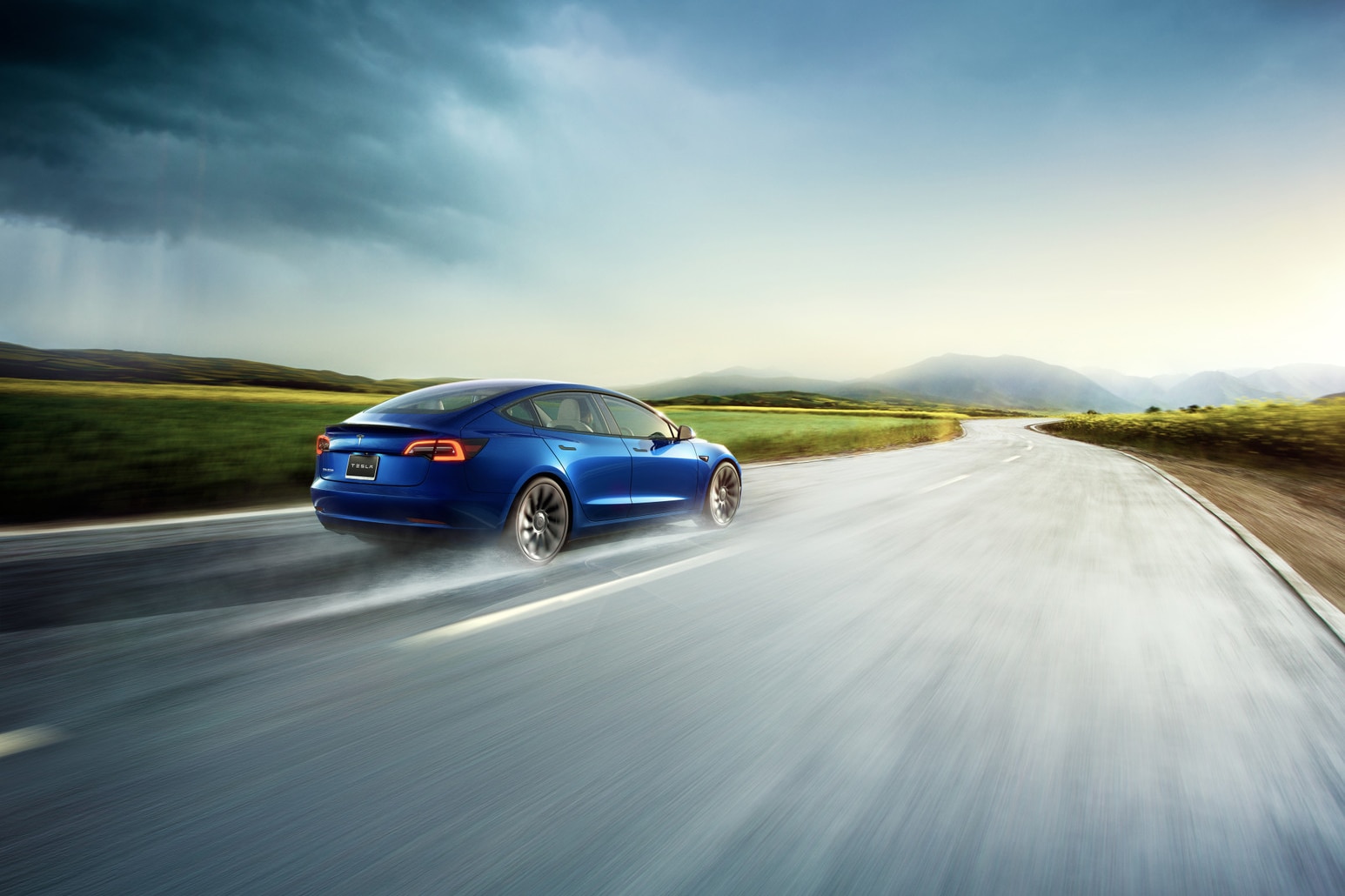 Tesla
Tesla
Tesla Full Self-Driving Capability
Tesla’s more advanced, extra-cost driver-assistance system is called Full Self-Driving Capability (FSD), but don’t let the name fool you: FSD is not capable of autonomous driving, wherein the driver can simply punch in a destination and let the car do the rest. The driver still must keep his or her hands on the wheel and eyes on the road when using FSD.
The FSD package builds on Autopilot with additional capabilities, including some “beta” features that are still under development and should be used with caution. One of those features, called Navigate on Autopilot, uses the destination typed into the navigation system and, working in conjunction with Autopilot, seeks to handle the highway portion of your trip. When operating properly, it should guide your vehicle from on-ramp to off-ramp, even automatically changing lanes to pass slower vehicles or to navigate an interchange. As with Autopilot, the driver must remain alert with hands on the wheel and eyes on the road while the car does this.
When Autopilot is enabled but there’s no destination in the navigation system, FSD’s Auto Lane Change can move the vehicle into an adjacent lane to pass slower traffic. The other beta feature, called Traffic and Stop Sign Control, reads stop signs and traffic signals and tells the car to behave accordingly. This technology similarly requires active supervision.
FSD also adds a host of parking assistance features. Summon allows the driver to exit the car and move their Tesla forward or backward in and out of a tight parking spot via a mobile app. Using Smart Summon, the car will exit a parking spot and maneuver around a parking lot to come pick the driver up. FSD will also parallel-park for you (with a driver behind the wheel) at the push of a button.
Autopilot and FSD can be activated nearly everywhere, and that gives Tesla a huge bragging point over the competition, although that doesn’t mean drivers should use them everywhere. The real-world capabilities of these systems vary based on a variety of factors. In many city and suburban settings, the Tesla systems are unpredictable and unreliable, and using them is a nuisance. Users have noted that they may swerve suddenly or may not detect major obstacles. Teslas using Autopilot have also been known to collide with stationary emergency vehicles, most often at night. The National Highway Traffic Safety Administration recently opened an investigation in hopes of understanding why those crashes occurred.
The Model 3, Model S, Model Y, and Model X are all available with FSD at a cost of $10,000. For those who can’t afford or justify such a high premium, the automaker offers a FSD subscription plan to owners. The monthly cost is either $99 or $199, depending on what hardware a vehicle has, which determines what FSD features will be activated. Used Teslas with the necessary hardware (specifically version 3.0 or newer) are also compatible with FSD. Vehicles equipped with older technology can be retrofitted with this equipment for $1,500.
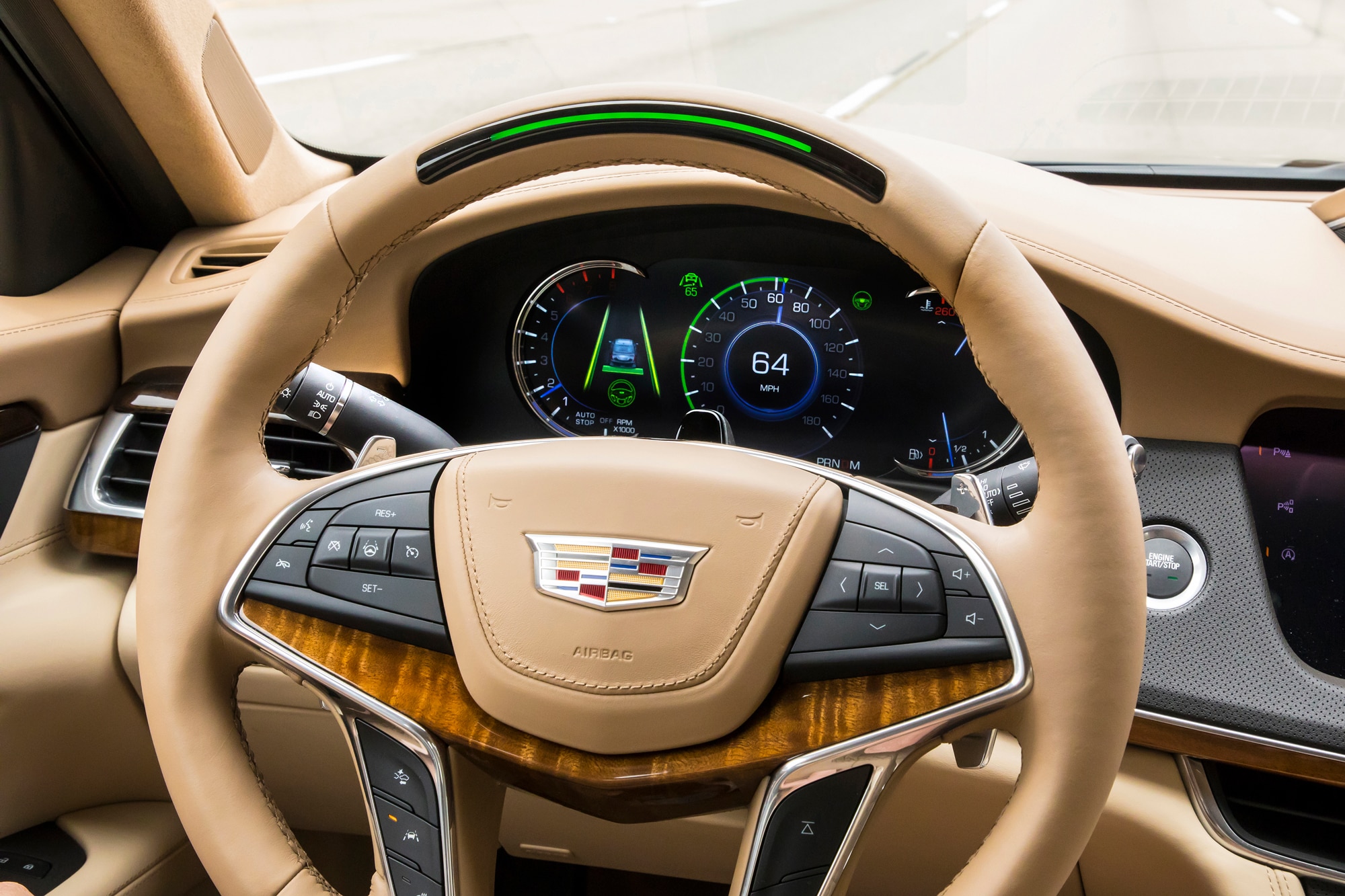 Cadillac
Cadillac
General Motors Super Cruise
In addition to lane-keeping assistance and adaptive cruise control, Super Cruise allows for hands-free operation on 200,000 miles of select, pre-mapped divided highways in North America. Introduced in 2017 on the Cadillac CT6 as the first hands-free driver-assistance system available on a production car in the U.S., it has since trickled down to other brands and vehicles under the GM umbrella.
The latest version supports automatic lane changes to keep the vehicle at an optimal speed and, on certain trucks and SUVs, a trailering feature. The latter takes into account the weight of a trailer and how it affects the vehicle’s driving dynamics and then determines the best following distance. It will also make steering adjustments to keep the trailer in line.
Super Cruise uses a combination of high-definition maps, GPS, radar, and cameras to monitor the road and other vehicles. The mapping data informs the system of what’s coming up, giving the car time to anticipate, say, a tight curve by slowing down in advance. The maps are also frequently updated so that the system can hand control back to a driver as the vehicle approaches a construction zone.
In addition to audio and dashboard alerts, a light bar on the steering wheel changes color to signify when Super Cruise is active. A camera mounted on the steering column makes sure the driver continues to pay attention, and capacitive sensors in the steering wheel let the car know when the driver has resumed control.
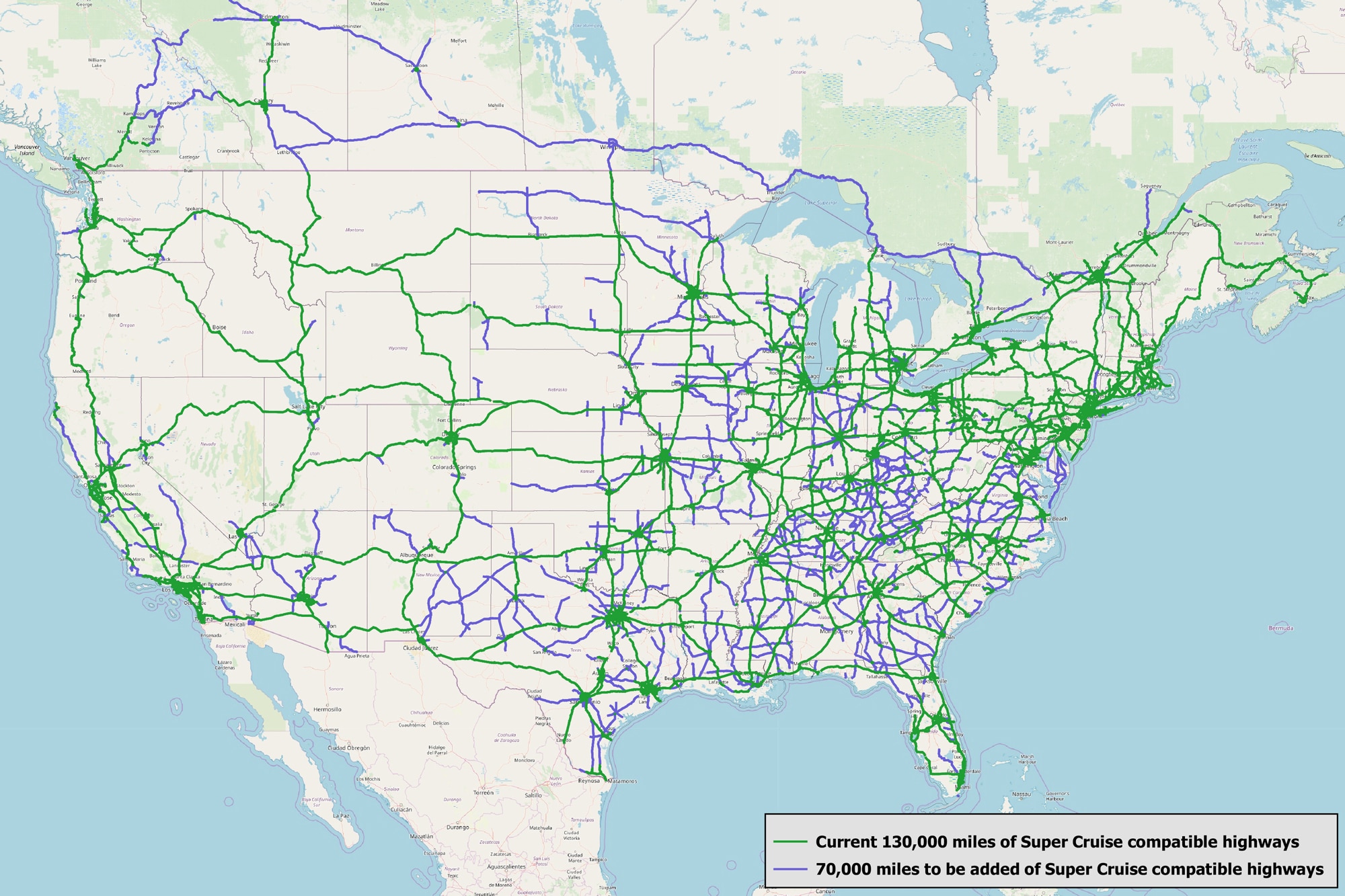 General Motors
General Motors
As the first hands-free driver-assistance feature to reach the market, Super Cruise has enjoyed several years of real-world testing, allowing GM to examine and improve the feature set as well as expand its system's coverage area while the competition rushes to catch up. But as we mentioned earlier, Super Cruise works only on divided highways, and it can’t navigate every situation. Road construction and faded lane markings may cause it to disengage. On the plus side, when that does happen, the driver knows right away via the highly visible light bar in the steering-wheel rim. Fail to take charge and the vehicle will prompt you with beeps and a voice command before coasting to a stop (at which point, you won't be able to re-engage the system until the next ignition cycle).
For 2022, GM intended to offer Super Cruise in the Cadillac Escalade, CT4, CT5, and XT6, the GMC Sierra and Hummer EV, and the Chevrolet Silverado and Bolt EUV. Unfortunately, the chip shortage delayed those plans, and currently only the Chevy Bolt EUV offers the tech, to the tune of $2,200.
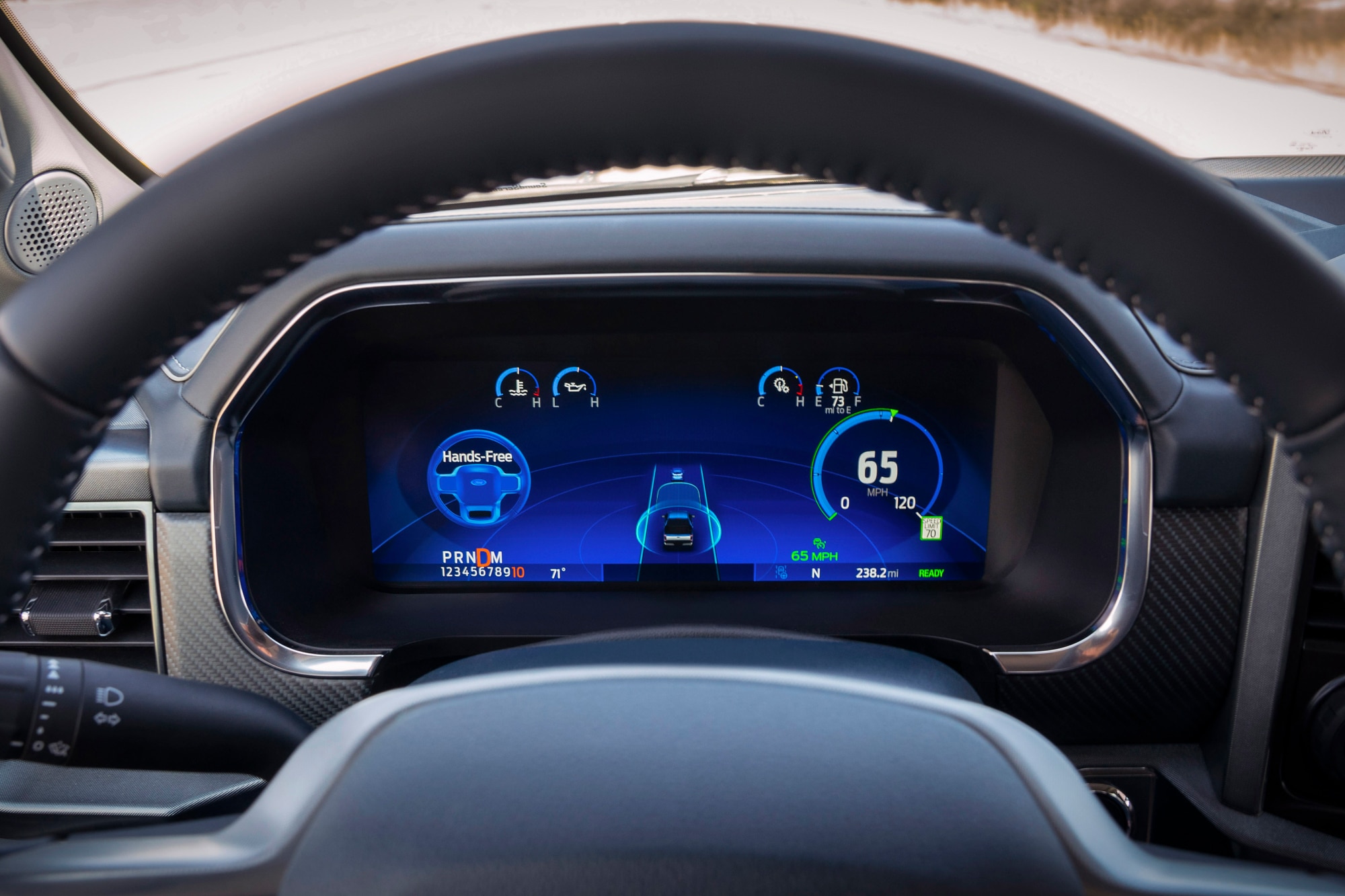 Ford
Ford
Ford BlueCruise
BlueCruise is the new kid on the block. Like GM’s offering, Ford’s system allows the driver to remove their hands from the wheel on pre-mapped divided highways (called Blue Zones) and uses GPS, high-definition maps, radar, and cameras to enable lane centering and adaptive cruise control, keeping the vehicle where it should be.
BlueCruise currently works on more than 100,000 miles of road in the U.S. and Canada, or about half of what GM’s system covers at the time of this writing. BlueCruise also lacks the lane-changing assistance of Super Cruise and FSD, but Ford plans to retroactively add this capability to current models via an over-the-air update in the future.
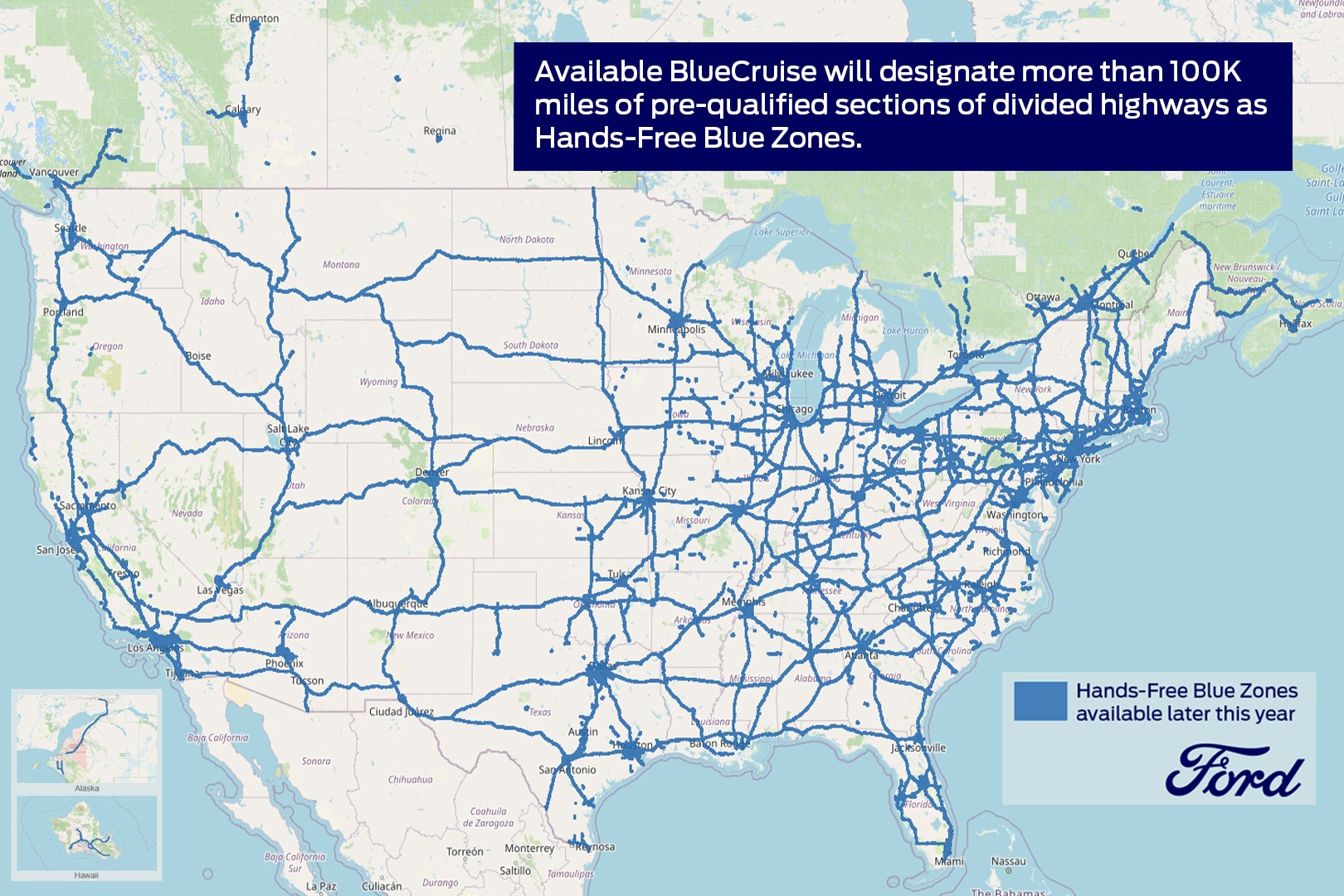 Ford
Ford
A camera in the instrument cluster tracks the driver’s eyes, and a torque sensor in the steering wheel determines if the driver has command of the helm. Unlike Super Cruise, BlueCruise doesn’t use a steering-wheel light bar to relay information, but rather sticks to just visual alerts in the dash cluster and audible warnings. If the driver fails to act, the vehicle will slow to a crawl.
BlueCruise is available on the 2021 F-150 and Mustang Mach-E. For the F-150, it comes standard on the top-spec Limited trim. Buyers of the Lariat, King Ranch, and Platinum models can get it by opting for the $1,595 Ford Co-Pilot 360 Active 2.0 package. As for the Mach-E electric crossover, the CA Route 1, Premium, and First Edition trim levels include BlueCruise at no additional charge, while the Select model offers it only as part of the $3,200 Comfort and Technology package.



